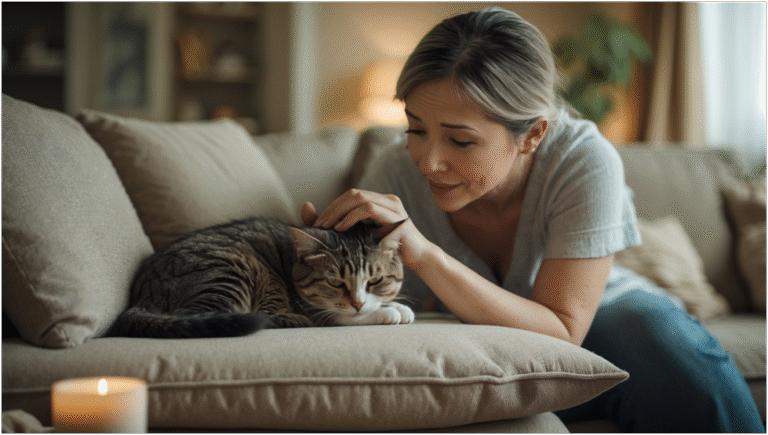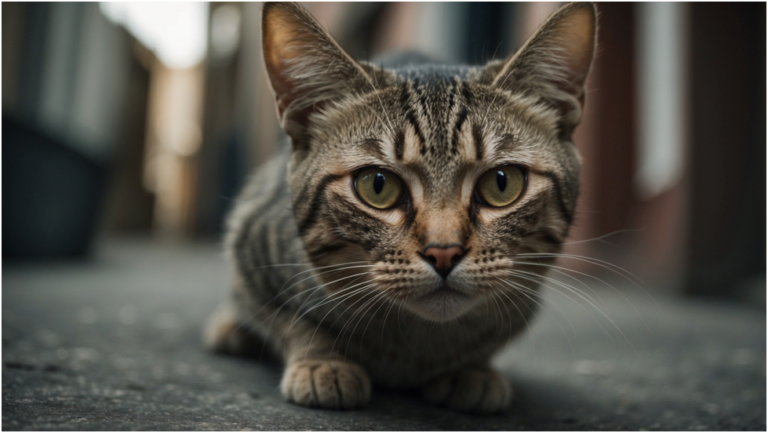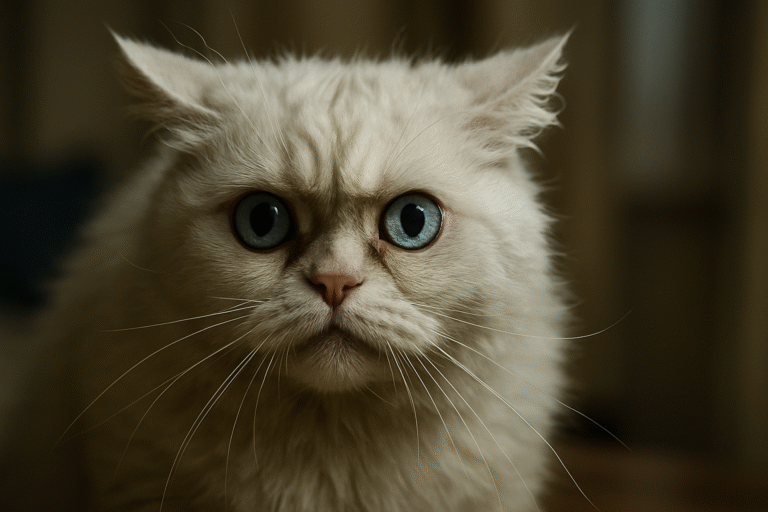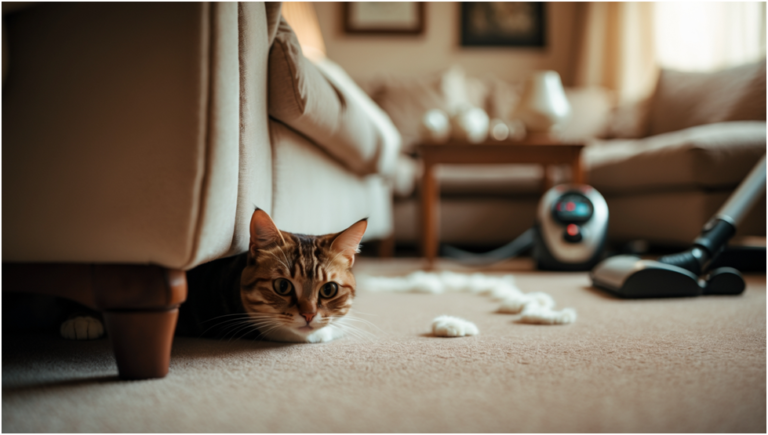Is My Cat Bored? Understanding Boredom in Cats and How to Entertain Them
While cats are independent creatures, they can get bored too — and their bored state can affect their physical, mental and emotional health.In this article we will cover key signs of boredom from overgrooming,excessive vocalizations to destructive behaviors and lethargy. Some solutions are interactive play, rotating toys, puzzle feeders, and stimulating environments such as cat trees and catios. By learning about their instincts as hunters, as well as companion animals, you can offer them a richer life. Entertainment can be provided to your cats through several proactive measures to avoid boredom and guarantee they are healthy and happy.
Is your cat bored so it overgrooms o meows a lot or scratch things aggressively? Discover top tips for keeping your kitty entertained, including playtime, puzzle feeders and environments, like cat trees and outdoor catios. Delve into advice for making them feel like they’ve gotten back in touch with their natural hunting instincts and make them physically and mentally fulfilled. Whether your cat is the purrfect playful feline or a slightly reluctant one, discover how to create a happier, healthier bond with your furry friend… today!
Cats are an independent species, but they are also capable of a variety of emotions, including boredom. Cats can become bored, just as humans are bored if they don’t get enough stimulus and engagement In this comprehensive guide, we will cover signs that your cat is bored, reasons why your cat may feel this way, methods to keep them entertained, and top toys to reduce boredom.
Signs Your Kitty Is Bored
Over-Grooming:
On average, cats dedicate 50% of their day to grooming themselves. Cats could over-groom when they are bored, resulting in bald spots or skin irritation. This behavior is often caused by stress or lack of mental stimulation .

“Tabby cat with hair loss grooming on wooden floor in a cozy living room, highlighting pet health concerns like feline alopecia.
Aggressive Behaviors:
Cats who become bored may show boredom in the form of behaviors such as chewing their own feet or chasing their tails, as they try to find any sort of engagement or relief from their state of boredom.
Excessive Vocalization:
When your cat is meowing or yowling, and they’re doing it more than normal, it can mean the cat is looking for stimulation or attention. If boredom is not addressed properly this vocalization may grow.
Destructive Behavior:
A bored cat might start to knock things over, scratch your furniture or even perform other destructive behavior just to “get rid of some energy.”

Orange tabby cat angrily scratching a beige couch with a knocked-over blue vase and spilled flowers, illustrating common cat behavior issues.
Lethargy: Bored, cats can also become lethargic, where a cat seemingly disinterested or sleeping a lot. Cats do need a lot of sleep, but if you notice sudden changes in energy levels, it may mean they’re bored or stressed out.
Stalking or Harassing Other Pets:
Cats can fixate on other pets in the home, stalking them or annoying them out of boredom. The bored cat is capable of making life hell for any other pet in your home!
Loss of Interest in Toys:
A cat who once played regularly may leave its favorite toys untouched — a sign of boredom. It is clear indication that it’s time to switch up your cat’s toys.
Pacing or Restlessness:
A cat that wanders around the house or seems restless is simply looking for something to engage with. It shows that they are seeking sensation that is not fulfilled.
Refusal to Eat Food or Treats:
Bored cats may abandon their food or treats when they are stressed or have health issues. The result is that weight loss and other medical complexes originate from losing interest in food. If this change comes with other signs of boredom, it’s important to investigate further.
Aggression Towards Other Pets
If a cat is bored, it will try to find a source of stimulation, and this sometimes takes in the form of targeting another pet in the household. If the impulse is too strong, the behavior might take various negative forms, including stalking, pouncing or challenging other animals physically.
Aggression to Humans:
A bored cat may playfully swat or bite during playtime or exhibit a more serious display of aggression if they feel overstimulated. If you find your kitty gets a little too nippy or swats at your hands during petting sessions, it may mean your kitty needs more stimulating activities or an outlet for their energy.
By noticing these signs and realizing what can cause boredom, you can take proactive measures to enrich your kitty environment and overall well-being.
Why Is My Cat Bored?
It’s important to understand why your cat may be bored so you can improve their quality of life and better occupy their mind. Here are more extended perspectives on common traits that can lead to cat boredom:
Lack of Stimulation:
Cats are instinctual hunters and need mental and physical stimulation to be happy. If they do not have adequate stimulating activities available to them or toys to mimic, they lose focus very quickly. Indoor cats in particular do not enjoy the same number of sensory stimulus as outdoor cats, and can suffer from lack of stimulation.
Monotony:
Static environment causes boredom. Cats are curious beasts who seek novelty. If they do not have new experiences, fresh things to do or new places to explore, or live in the same environments for too long, they can quickly get bored and develop symptoms of restlessness.
Loneliness:
Cats are often seen as independent creatures, but just like us, they feel lonely, especially if they’re alone for long periods of time. Whether interaction with humans or with other pets, socialization can be critical for mental stimulation. Not having anyone to socialize with can become monotonous, as their social needs are generally met through interaction.
Insufficient Exercise:
Cats that do not get enough physical activity can become bored. Proper playtime is an indispensable thing to minimize their energy and avoid behaviors linked with boredom. So, if they do not get enough exercise, they could turn to destructive behaviors or simply have some excess energy that they are unable to expel.
Health Issues:
In some cases, boredom can be caused by health issues affecting higher energy levels in a cat or inhibiting its ability to play. Arthritis and dental problems or other medical conditions may also make them unwilling to move around or play, which can affect action.

Tabby cat sitting on an examination table at a vet clinic with an eye chart and medical supplies, emphasizing feline healthcare and vet visits.
Hormonal Changes:
A cat’s behavior can be affected by changing in cat’s hormonal levels due to age, spaying/neutering, or other factors. They may be less playful and want to play with toys less.
Seasonal Changes:
Seasonal changes can also affect cats. For instance in colder months, they may not be as prone to exploration or active play. Changing in the levels of daylight can have an effect on their energy and activity levels.
Food boredom:
Do Cats Get Bored of Their Food. While many cats are perfectly satisfied with daily routines, some are bored because of lack of variety. In the wild cat hunts and eat a variety of things that sparks their interest in their food. If your cat appears disinterested or is refusing to eat, visit a vet to ensure the problem . Also try slowly incorporating new foods, puzzle feeders or sprinkle some treats for fun at mealtimes!
How to Entertain a Bored Cat
After discussing signs and causes of your kitty’s boredom, let’s dive into some enjoyable and effective ways to keep your feline friend stimulated and engaged.
1. Interactive Toys and Puzzle Feeders
Repetitive feeding routines is a common reason of cat boredom. Interactive feeders or puzzle toys that make them work for their food can bring some fun to meal. These toys stimulate your cat’s brain, since they must solve a challenge before reaching the treats or kibble inside. This not only help to keep your kitty away from boredem, it also keeps their mind stimulated and body active!
Place interactive toys that require your cat to think and problem-solve. Puzzle feeders, for example, require your cat to work their way to get treats or kibble out, turning mealtime into a fun challenge. Most modern toys are made adjustable so you can increase the difficulty as your cat gets better at it.

Excited tabby cat playing with a green puzzle toy on a wooden floor in a cozy living room, showcasing interactive cat toys for mental stimulation.
DIY Playtime Ideas
Scavenger hunt — lived experiences using household items to create play. A single ball of yarn (supervised to make sure it’s not ingested) can amuse your cat for hours, for example. Handmade used 100% wool could be an ideal fit for your cat to enter along with a feeling of absolute solitude. Empty cardboard boxes or paper bags could be fun hideaways or play structures, igniting your cat’s natural curiosity.
Simulate Hunting Activities
Cats are instinctive hunters, so mimicking hunting can help satisfy instinct. Mimic the behavior of prey with feather toys, wand toys, or laser pointers. Consider establishing small “hunting missions” in your home in which you hide treats or toys for your cat to find. This not only engage their mind, it also promotes recreation, which is mendatory for sustaining a healthy weight.
Throw treats around the room for them to “hunt” for. You could even hide treats around in unusual spots, like on low furniture or tucked away in the cardboard tube, for a little adventure. but be careful that treats should only 10% of your cat’s daily caloric intake. Alternate the location of these hunting spots frequently keep your cat interested and stimulated about their environment.
Rotate Toys Regularly
As with humans, cats can become tired of the same toys. To keep your cat entertained, try rotating their toys every few weeks. Put away some of the old toys and introduce a new ones. In this way, when a toy reemerges, it feels novel and exciting again. You might also changing the kinds of toys — some soft and plush for snuggling, and others that make noise or crinkle for an audio experience, and interactive toys that make them think.
Create a Climbing Jungle
Climbing and perching high are instinctual behaviors for cats. Investing in a cat tree or building your own climbing spaces can provide your cat with a great way to get rid of their excessive energy and enable them to explore their surroundings from above. Think about adding shelves, ramps or even very sturdy furniture that can act as climbing structures. Window perches are a great addition, allowing your cat to bask in the sun and observe birds and other outdoor activities to satisfy his curiosity and entertain her for hours.
Outings and Explorations
If your feline is willing, gently introduce them to the outside world with a secure harness and leash. Guided strolls in your backyard or at a cat-attractive park can introduce them to new sights, noises and smells, which can provide a stimulating change of scenery. If outdoor activity isn’t possible, consider building a “catio” — a screened enclosure that lets your kitty soak up the fresh air without risk.
You can create a warm perch in front of a window so your furr-baby can watch the life outside. You can place bird feeders or squirrel feeders for visual enjoyment. It not only amuses your cat but also gives them a natural type of stimulation as they observe wildlife up close.
Tap Into Their Instincts
Cats are natural hunters, and tapping into that instinct can relieve boredom a great . To mimic a hunt, use feather wands, laser pointers or toy mice.By supervising hunt mimicking play you are not only keeping them occupied but you are also giving them much needed physical exercise. So try a few short session periods a day of active play. Not only this will entertain your kitty, but it will also help strengthen your bond with your furry friend.
Varied Feeding Techniques
Have you noticed your cat seems disinterested in their regular diet .so look at your cat and switch to differing flavors or textures of food once in a while. Offer wet food or a new brand to get them curious. You can even use puzzle feeders or give a cocktail for treats once in a while to make things interesting. Puzzle feeders make your cat work for their food, which can provide a mentally stimulating challenge at mealtime to stave off boredom.
Interactive Playtime
Sometimes, a little one-on-one time with the human is all that’s needed to cure a cat’s boredom. Make sure to do 15 or 30 minutes of quality play with them every day. This can be as easy as throwing a ball or playing hide-and-seek with them. The secret is to change it up, alternating interactive games with different toys and approaches to keep things interesting. Your participation not only provides them with fun but also meets their social needs, reinforcing the connection between you and your feline.
Tracking Their Behavior Change
A change in behavior may be a sign of boredom, but it could also be a sign of other underlying issues. If your once playful cat suddenly seems uninterested, lethargic or has other changes in mood or appetite, it may be worth a visit to your veterinarian. Health problems can sometimes present as boredom, so it’s important to eliminate medical issues before diving into entertainment solutions.
Creating a stimulating environment
Keep your cat’s environment engaging. You can achieve this by offering ample vertical space for climbing, coozy spaces for snoozing, and scratching posts to trim their inevitably sharp claws. Cats thrive in vertical spaces, so think about spreading cat trees or wall shelves they can explore. A multi-level surroundings encourages exercise, as well as giving them plenty of places to explore, climb and hide.
My cat is bored, but won’t play
If your cat appears to be bored but does not partake in a play session, possible underlying problems might exist. First, speak with a veterinarian in order to rule out health issues that may be impacting their behavior. If your cat is well, but still won’t play, it may just be that you have yet to find their favorite toy. Cats are predators — they hunt: so toys that mimic the thrill of the chase — those they can stalk and chase and catch — are favorites of theirs. Stay away from frustration-inducing toys like laser pointers, which, since they don’t actually end in a ‘catch.
Pro tip Try rewarding your cat with a treat or a meal after playtime to emulate the satisfaction of a successful hunt.
Conclusion
Cats are bored — but it doesn’t have to be permanent. By recognizing the signs and factors behind your cat’s boredom, you can implement a wide range of activities and toys to keep them mentally and physically engaged. From interactive toys , instinctive activities to just simple companionship, there are numerous ways to have your feline friend occupied and content. Keep in mind change things up at different times so that your cat doesn’t get bored. By being actively involved and creative, you can turn a bored cat into an playful kitty that lives for engagement and interaction!

Relaxed orange tabby cat lounging on a cat tree by a sunny window with a scenic outdoor view, promoting cat relaxation and cozy pet spaces.
Faqs
Do indoor cats need toys?
Yes, indoor cats require toys in order to stay mentally and physically stimulated. Toys simulate prey, enact preying instincts and prevents boredom. They also motivate to exercise which helps in lowering the chances of obesity and health problems. Interactive toy such as wands, puzzle feeders, and scratching posts not only keep them physically agile but also strengthen the relationship between felines and their owners.
Are cats stressed in small apartments?
If your cat does not have enough personal space or environmental enrichment, it can cause stress in small apartments. Vertical spaces — for example, cat trees, window perches and hiding spots — help reduce stress. It helps with their boredom and relieves added stress that might be caused by limited space.
Why is it so important to entertain your cat?
It’s important to keep your cat happy and healthy. It relieves stress, boredom-induced destructive behaviors , and satisfies their natural hunting instincts. It also builds the relationship between you and your cat and encourages exercise to keep healthy weight.
How much play does a cat need?
Most cats require 30–40 minutes of playtime per day, broken up into short, 10–15-minute sessions. Playtime should coincide when they are naturally active, at dawn and dusk. Kittens may need more regular sessions, and senior felines need gentler interaction geared to their energy levels.







